How do these marketing channels stack up?
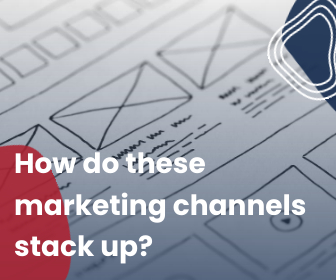
There are A LOT of different marketing channels out there. What are the pros and cons of some of the common ones?
Social Media
Pro
There are over 3.8 billion people on social media around the world. Social media is a fantastic way to connect with customers, build brand loyalty, and generate sales.
People don’t just want to buy from companies because they have good products and services. They want to know what your brand stands for in addition to what it sells. Social media can help potential customers get to you. Social media feel like a 1-on-1 conversation between the brand and consumer, which helps build loyalty.
Con
A lot of the value from social doesn’t show up immediately. It’s rarely simple to track social media’s ROI. Often the goal of social media is not just to generate sales but instead to build connections. Without measurable results, using social media can be discouraging.

Pro
Often it a brand’s only way to communicate with customers and can feel very one on one. A lot of millennial and gen z’ers expect to communicate with brands through email. Also, pretty much everyone has email so you know you will be able to communicate with people through email.
Con
We all get so. many. emails. Most office workers receive 127 every day. It can be hard to stand out from the crowd. People don’t have time to read emails that don’t actually provide them value.
Email marketing also has a lot of laws and rules connected to it that can hurt you if your aren’t careful!
Content/SEO

Pro
Customers often rely on a business’s website for information. Especially for local businesses, it can be the only way to know a shop hours or address. Putting the information on a website instead of a social media or directly in a browser legitimizes the information.
Good SEO gives your website credibility. It makes it easier for people to find your website when they search for it. And it helps create a smoother user experience.
Con
Bad SEO can hurt you. Most searchers never go past the first or second page of Google, though, which is why those top spots in the search results are so coveted. Having the proper SEO can prevent your website form getting organic traffic.
53% of all trackable website traffic comes from organic search. SEO is the main thing influencing how easy it is to find you online organically. Which is probably why it’s estimated that agencies and brands spent over $79.27 Billion on SEO services last year.
Google Ads

Pro
Where are people? On their phones. So, google ads is an extremely effective way to find people where they are. Google ads is great for brand awarness as well as retargeting. It is great if you want measurable results and analytics.
Con
Billboards, signs, posters, newspapers, and magazines all exist with in different physical spaces. With digital advertising however, we are all competing for the same ad space. That ad space is worth more now has less guarantees attached to it.
Trying to figure Google ads can feel like rocket science. There’s a large learning curve and it can a while to feel confident in the set up.
Print and Mail

Pro
Direct mail average open rate is somewhere between 68 and 90%, which is double, triple, or quadruple the average open rates of other marketing channels. Do people who open direct mail actually purchase? Yes! On average people who receive direct mail purchase 28% more items and spend 28% more money!
Why is direct mail so effective? It comes down to fact that we (humans) like getting mail. 41% of Americans of all ages look forward to getting their mail every day. We still want very real things in our hands, which is something totally lost in email inboxes or on social media. That tactile connection translates into 💰.
Con
Since Direct mail requires use of the postal system it has fixed costs. The graphic design of the mail piece may also have an additional cost. Using direct always requires a bit of math and if done wrong can hurt your ROI.
It’s not always posable to see direct, measurable results, from Direct mail campaigns. And if you can measure results, it may take a while to get the full picture.
Another thing that can be a disadvantage to direct mail is that you need a really good foundation of address data. The problem us that a lot of data providers don’t make sure that their data is accurate and that hurts the effectiveness of your campaign.
Connected TV

Pro
TV is a time-tested advertising channel. Although it’s a lot less common than it used to be, it can still be very effective. Many marketers are using CTV (connected TV) or OTT (over-the-top) channels to target consumers using streaming services and connected TV devices such as Hulu and Roku. Advertises are embracing these platforms as more and more ad space becomes available. Spending for CTV advertising is expected to grow from $6.94 billion in 2019 to $8.88 billion in 2020, a 28% increase.
Con
With customer attention spread so thin and cable tv subscriptions consistently falling, (over 16 million in the last five years) there’s a lot less advertising space available. Content consumption is at an all-time high and therefore, competition for viewer’s attention is as well. 84% of marketers say that it is getting harder to grab a consumer’s attention with television advertising alone.
Audiences today expect personalized and relevant targeted ads. Linear TV (cable and network television) often fall far behind in targeting capabilities. Therefore, it can be a challenge for advertisers to figure out how to integrate linear TV into their campaigns.
Are these Channels “DEAD?”
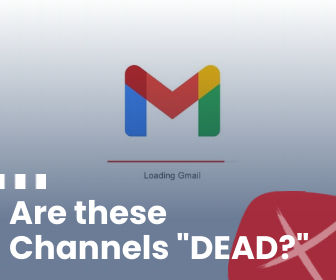
It seems like soooooo many articles/emails/ebooks/Facebook videos are titled something along the lines of: “blank” is dead. Or “Why the new ios update is going to kill email marketing.” Or “3 stats that prove print and mail is dead.” But it is? For the most part those titles are just clickbait, and the content just proves how it is very much not dead.
So, let’s take the three most common “dead” or “dying” marketing channels and see how effective they really are.
Email Marketing
I probably get an email once a week proclaiming the end of email marketing. How can email marketing be “dead?” Statista estimates that close to 320 BILLON emails will be sent every day in 2021. On average, office workers receive 127 every day. And a Forbes article from last year suggested that “every person needs at least four email accounts” for security reasons. However, quantity of emails is one reason some say that email marketing is losing its effectiveness as a marketing channel. Is that true?
Email is often one of the main touch points a brand has with a consumer and many younger consumers prefer to communicate with brands with email. Even email that’s clearly from a mailing list still feels like a direct conversation. Which contributes to email’s engagement rates. Across industry’s email average click-through-rate is 3.71 and the average open rate is 22.9. Although that may not seem like a lot, Facebook, Instagram, and twitters combined average engagement is only 0.58.
Part of the reason email gets better engagement rates is because with email, the message is directly reaching who it’s intended for.
Print and Mail
The death of print and mail has been predicted since the beginning of email. Probably even before then. One of the very first articles in our Weekly Vibe newsletter was called “Print’s Not Dead, Right?” It wasn’t in March 2020, and it defiantly isn’t now.
Direct mail average open rate is somewhere between 68 and 90%, which is double, triple, or quadruple the average open rates of other marketing channels. Do people who open direct mail actually purchase? Yes! On average people who receive direct mail purchase 28% more items and spend 28% more money!
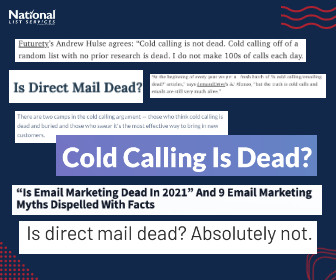
Why is direct mail so effective? It comes down to fact that we (humans) like getting mail. 41% of Americans of all ages look forward to getting their mail every day. We still want very real things in our hands, which is something totally lost in email inboxes or on social media. That tactile connection translates into 💰.
Cold Calling
Cold calling is another one of those things that’s been “on its way out” for years! Why is sticking around? At this point, an actual person to person conversation is a novelty and stands out against digital interactions. And sales, more than anything, based on connections and communications. It’s a lot easier to ignore an email than a ringing phone. It can also be harder to say no to a real person who you can actually hear.
If you add cold calling as part of your omnichannel marketing, work on your pitch, and be prepared to fail, you may be surprised at how effective it is!
What is your favorite marketing channel or tactic that’s been “dead” for years?
5 Ways to Help Emails Reach People
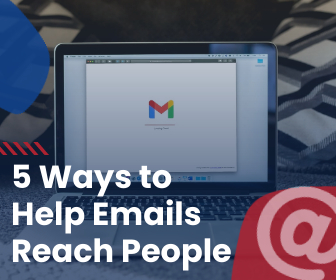
There are so many things that impact an email’s effectiveness. Often, what matters to the consumer and what matters to the email service are very different things. It’s important to strike the right balance in making the consumer and email service happy, as well as reaching your goal in sending the email. So, how can you make sure your emails reach people?
The Email Services
What do email services care about? They care about the backend/behind the scenes stuff. Things like how heavy images are and the amount of content and the types of links. This is where general best email practices come into play.
It’s important to give consumers an opportunity to opt in (and out if they want) of your email campaigns. If you don’t give people a way to opt out, you are breaking federal email laws and get blacklisted or penalized. Give people the option of choosing what types and how much email content they want from you. Follow through on their requests promptly. Legally, you are required to honor their request within 10 business days. Honoring that request promptly will build on their opinion of your brand.
What other email practices are required by law? Don’t use misleading or inaccurate header information such as your “To,” “From,” and “Reply-To” information. You want people to know where the email is coming from and so does the email service provider. Consumers don’t want to get an email from someone they don’t trust, and the email service provider doesn’t want to deliver email like that.
Don’t mislabel the email. The CAN-SPAM act requires that email subject lines accurate reflect the content of the email. That includes ad information. Like most social medias, email is required to tell the consumer if it an #ad. However, there is a lot of leeway on this and how you choose to disclose this information is up to you.
Consumer’s Opinions
Now that you have followed all the email laws and best practices to get your email in your consumer’s mailbox, what else should you do? Well, consumers care about catchy subject lines, engaging and interactive content. Here’s 4 things that will impact your emails effectiveness from the consumer’s point of view:
Choice of Words
Email marketing provides freedom for trying out different types of copy until you find works best for your audience. Every audience is different so what content will be the most effective is also different. It is important to understand your demographics and who your audience is.
Personalized Content
Email is more than just delivered information. It’s a conversation between brand and consumer. Often it a brand’s only way to communicate with customers and can feel very one on one. The consumer feels like they know the brand like a person, so it makes sense if the brand communicates with the consumer as if the know them as well. They are simple things that make that conversation more memorable, for example, many brands use the customer’s name in emails.
Beyond that you can use audience segmentation to separate your audience into groups that share common characteristics like demographics and behavioral information. Using your audience segments to target your message to things that each group are actually invested in can greatly increase how personal your marketing will feel to the customer.
Brand Consistency
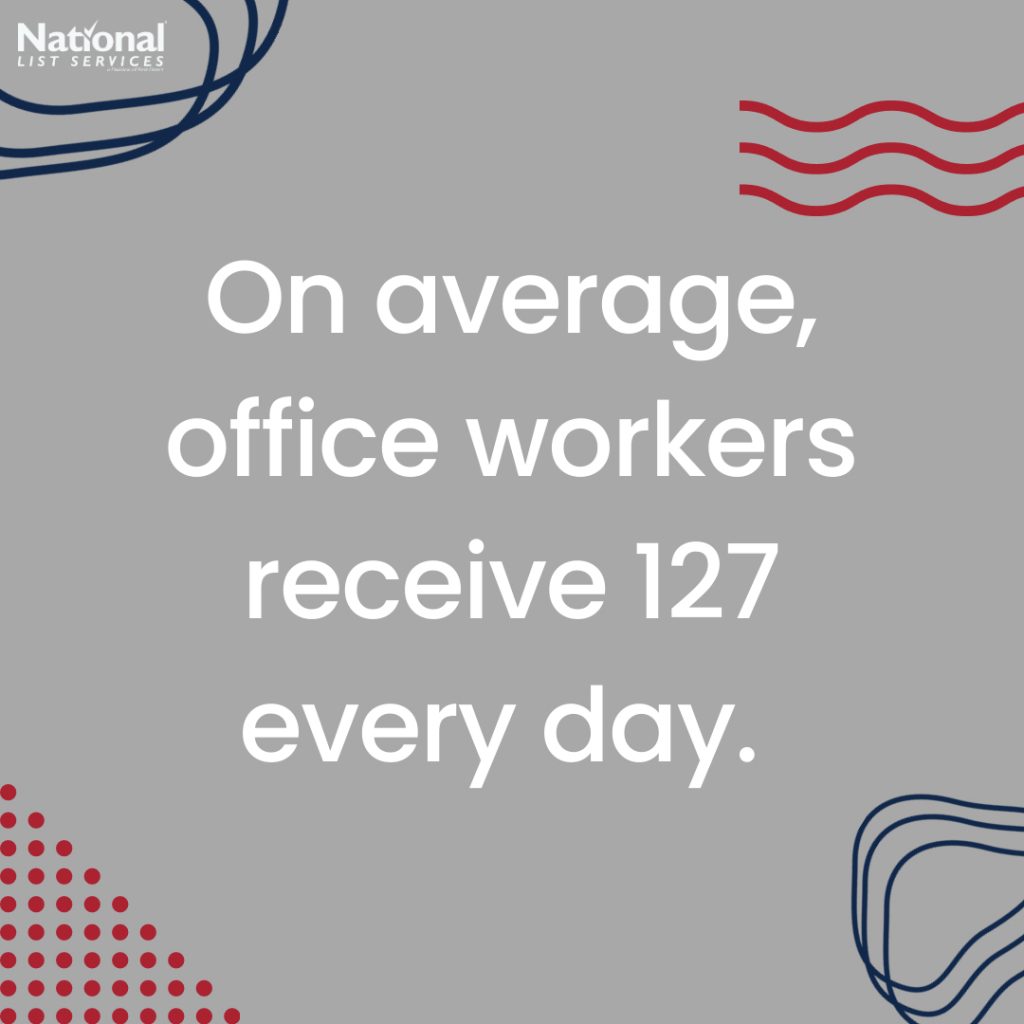
Since email is often one of main touch points brands have with consumers, it’s really important to maintain brand consistency. The consumer needs to know that the message is from you. Keeping that brand consistency helps your brand’s personality shine and helps people get to know you. Brand consistency builds loyalty and trust. It helps the consumer maintain the connection to your brand.
What brand elements should you include in your emails? Your logo, brand colors, and fonts are good places to start. Due to the nature of email, you don’t want to over crowd it with branding. Instead, think about how tone and feeling. Does the way this email is set up feel like how my brand feels?
Don’t waste people’s time
Most office workers receive 127 every day. People don’t have time to read lengthy emails that actually provide them value. Email copy writing is about providing value as succinctly and quickly as possible. Be direct and to the point. Don’t word vomit on people. Use infographics, bullet points, and short paragraph too highlight the point of your message.
What makes you open an email?
Email List Opt-Ins Explained
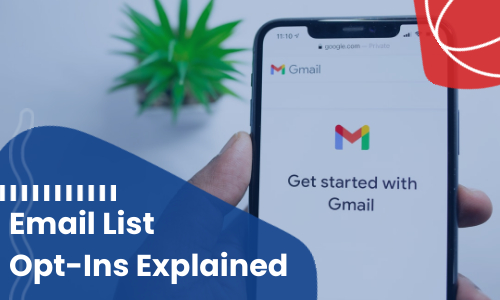
Although “the end of email” has been threatened may times in recent years, this year has shown us that email lists aren’t going anywhere. In fact, more than 50% of people in the US check their personal email over 10 times a day! Most people say that it is still their preferred way to communicate with brands.
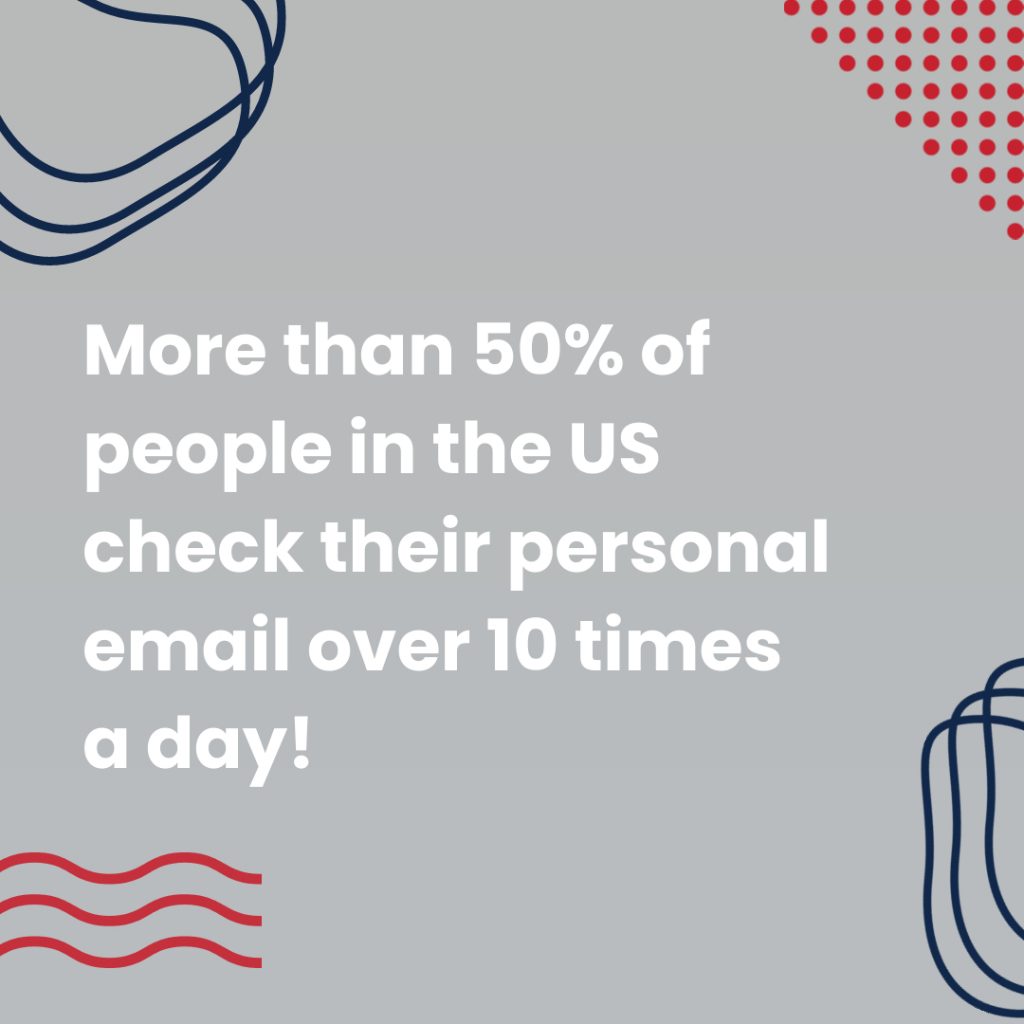
Email Marketing is still a great way to reach a lot of people relatively cheaply. It still is an extremely effective marketing channel.
How Can You Use Email Marketing?
Email Marketing can be used for many purposes. For example, looking to send a high-impact promotion, invitation to an event, a newsletter, an online survey, or want to expand your client list? Email Marketing can do all of that!
Email is a great way for customers to stay in touch with brands and keep up on what ways they can buy from them.
What do the Opt-Ins Mean?
E-mail Marketing doesn’t have to be complicated! There are many available streamlined methods to help you market more effectively and efficiently. There are even multiple types of email lists or processes: Single Opt-in, Double Opt-in, or Guaranteed Open campaigns. Using the right type of campaign can help you simplify the whole process.
- Single opt-in is when an email address is added to your mailing list without needing the address owner to confirm or acknowledge they’ve been opted in. This is great for simplifying the process: for you and the people you are emailing. Less points of contact before a campaign also lower failure rates and raise engagement rates!
- Double opt-in is also sometimes called confirmed opt-in. The second, or double, opt-in is often in the form of a confirmation link sent either to their email or in a subscription activation page. After they confirm their email, then they are added to your mailing list. Double opt-in is great for making sure that your email ends up in your target address’s box. And since the user took the time and effort to do the extra opt-in, you know that they are truly interested in whatever they are opting-in to!
- Guaranteed Open are when you pay for the number of “emails opened” instead of paying for the number of “emails sent.” Guaranteed Open emails are sent in segments until the purchased number of opened emails is reached. Using guaranteed open is a very effective way to make sure your email reaches your desired audience. They are also great for driving traffic to your website!
You may be surprised how easy and affordable it is to connect with your existing or potential customers / members with email marketing!
There Are So Many Benefits of Email Marketing:
- Personalized Connections with Customers
- Collect Feedback and Data About Your Customers
- Drive Sales
- Drive Traffic to Your Website and Products
- Quick Turnaround Time
- Cost Effective and Scalable
- Building First-Party-Data Resources
- Provide Valuable Content for Your Audience
The opportunities and possibilities are endless!
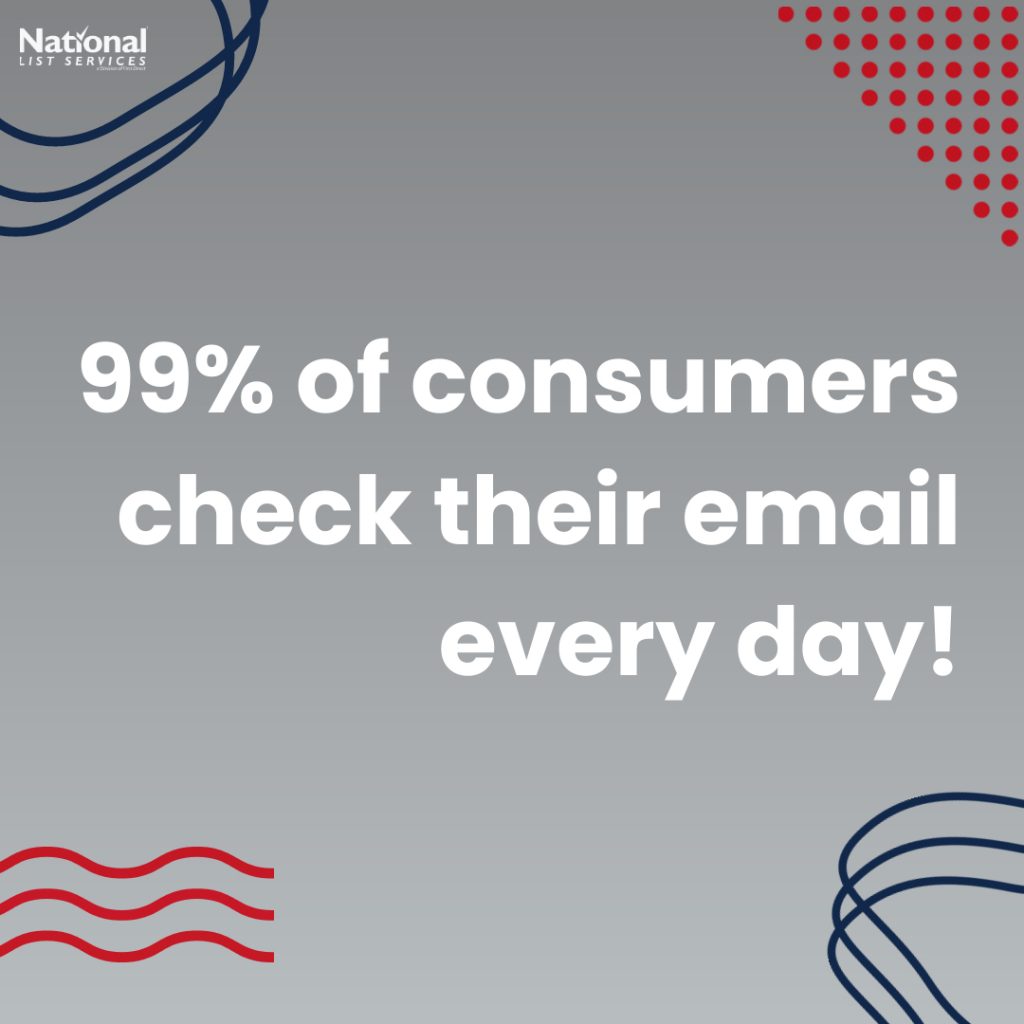
Email Trends… Personalization!
Personalization is a big key in reaching your customer’s heart. Using the customer’s name in things like email subject lines is a good first step. Beyond that you can use audience segmentation to separate your audience into groups that share common characteristics like demographics and behavioral information. Using your audience segments to target your message to things that each group are actually invested in can greatly increase how personal your marketing will feel to the customer.
How to you use email lists?
What’s Working in Marketing- 2020?

Eleven months into 2020, it is safe to say, this year has had a lot of surprises. So, what has working in marketing this year? Here is what we have found:
1) Customer Experience driven marketing. This encompasses a lot of things. The main things that we have found to be successful in 2020 are brand storytelling and personalization.

Our brain is literally wired to seek out and respond to narratives. And no matter what is happening around us, that isn’t going to change. We are going to connect and respond better to brands that tell us a story and bring us along on a journey. How are some companies implementing this strategy? YouTube series, podcasts, active social medias are popular first steps. (Learn more about customer journey’s here.)
Personalization is a big key in reaching your customer’s heart. Using the customer’s name in things like email subject lines is a good first step. Beyond that you can use audience segmentation to separate your audience into groups that share common characteristics like demographics and behavioral information. Using your audience segments to target your message to things that each group are actually invested in can greatly increase how personal your marketing will feel to the customer.
Utilizing Multi and Omni channel marketing strategies will also increase how smooth your brand experience is for your customers. (Learn more about building audiences here and here.)
2) Email. More than 50% of people in the US check their personal email over 10 times a day. Most people say that it is their preferred way to communicate with brands. Although “the end of email” has been threatened may times in recent years, 2020 has shown us that email isn’t going anywhere soon. For many companies, email became the only way they could communicate with their customers this year.
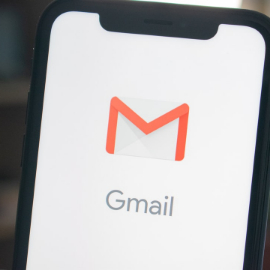
That means the margin for error with sending emails is relatively small. So. don’t forget to preview your email with different providers and devise before your send!
(Here are more email tips and tricks.)
3) Responsible consumerism and business practices. More than ever, consumers are aware of the effect their purchases have on the environment and on society and they want to buy from companies whose values align with theirs. People expect companies to actively fight injustices and be visibility support causes.
What has worked for your marketing this year?
